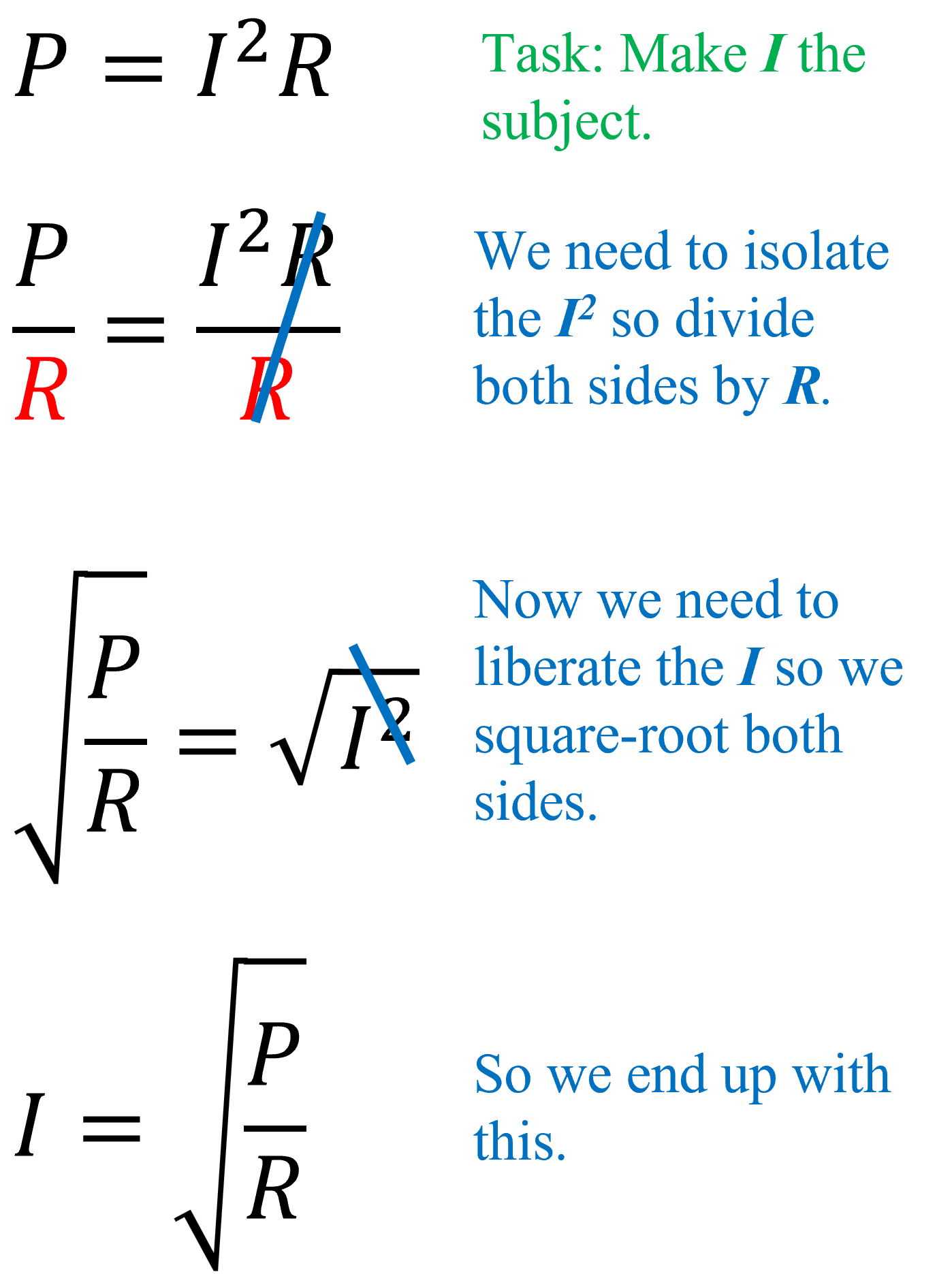Formulae are used to show the relationship between different quantities such as voltage, current and resistance. We usually remember specific formulae such as Ohm's law which is I=V/R, but we may need to work out V or R. Below is the method you would transpose Ohm's law:


Formulae with more terms can be worked out in just the same way. Below is an example of the transposition of the resistivity formula.



Two of the formulae we use to calculate power have squares in them. When transposing this type of formula all you need to know is that the square and the square root cancel each other out.




More complex formulae containing multiple squares and square-roots follow the same rules as when transposing power formulae. It just takes a bit more thinking. The formula in this example is to calculate impedance (Z).


The formula that describes the function of a transformer looks quite scary. Working logically however, it is no different to any of the other formulae we have looked at. There are four examples shown, but there are many possibilities. The formula is:





